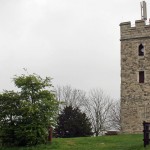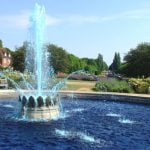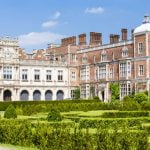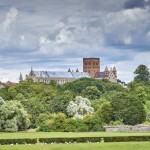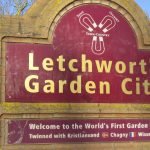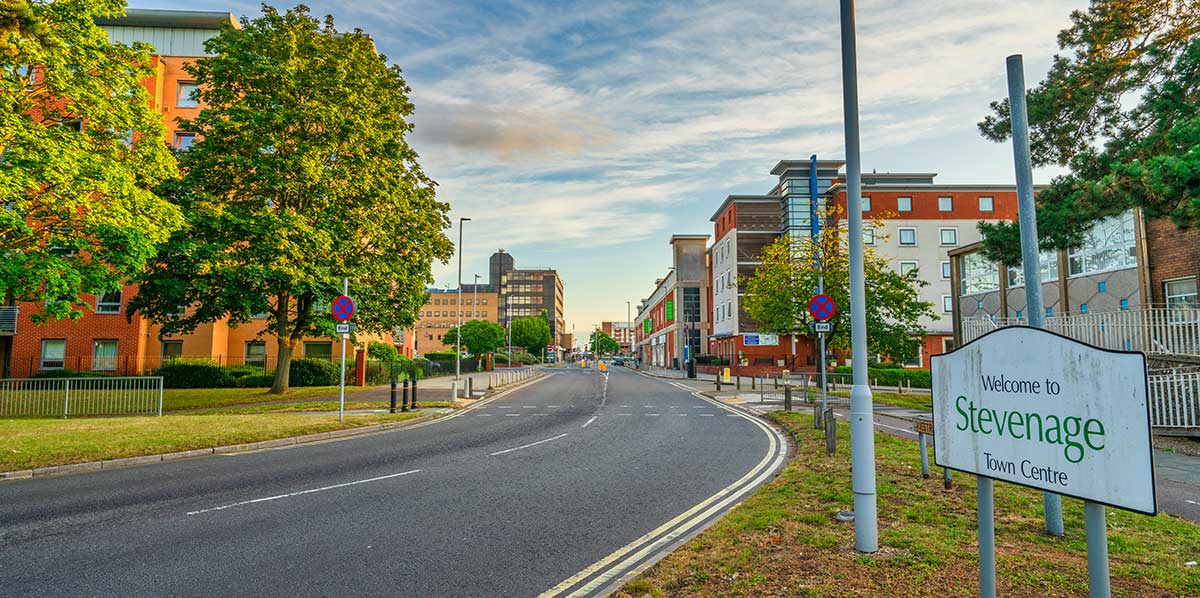
Stevenage is a relatively new location in Hertfordshire, being designated as a new town just after WWII. Originally more of a village it grew quickly as the London overspill spread and originally it was expected to be a commuter town. However, as you will see it is fast becoming a destination in its own right and one worthy of adding to your potential staycation destinations.
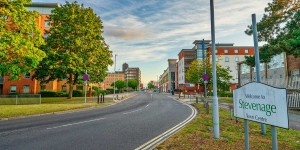
Image: Pajor Pawel/Shutterstock.com
To be fair Stevenage is still a bit of a modern-day enigma, large but with little in the way of historical background, and lacking in identity a degree. But don’t let that put you off, just because it’s modern doesn’t t mean it is totally devoid of charm. Anyway, our job here at Five Minutes Spare is to look for the positives and when we did a bit of digging we found plenty of good things about Stevenage and it’s not just because we are football fans!
So join us on our Five Minute tour of Stevenage, starting with what history we could find…
The Early Days of Stevenage History
As far as we know, Stevenage dates back to the Roman era. It was probably settled because it was near the Roman road that ran from Verulamium (a Roman town where south St Albans is now) and Baldock to the North. It may have been a stopping point, with a few villas and possibly hospitality. Some remains were found when the New Town was being built but even more, evidence was found when they built the Chells Manor houses. They dug up substantial evidence of Roman activity and even found some burial sites.
The Romans would have retreated in or around the first few centuries, leaving behind empty villas and a few diehards who had already built a life and family on the cold shores of England. The people that were left, were a mix of Romans and Britons, they were named Saxons. By the 7th century, there was evidence of a Saxon settlement near where the Roman remains have been found. It is likely that a few Romans stayed behind to start that village. Evidence from this time suggests that Stevenage’s name translates to ‘strong oak’, or something thereabouts. It could even be that a large oak formed the villager’s meeting place or place of worship.
The Normans Arrive
By the time of the Norman Conquest, in 1066, we had only just learned how to make records. No one had ever thought to go around England to record the wealth yet, and so William the Conqueror sent his merry men forth to write down all they saw. At that time, Stevenage had 28 households, making it one of the largest towns in Hertfordshire at the time. This huge number of residents also put it in the top 40% of all settlements in England… but the other details contained within are somewhat disturbing.
Stevenage is recorded in the Domesday Survey as belonging mainly to the Abbey of Westminster, who would have profited from its use. Keep in mind that the Church owned this land.. which was worth about 13 pounds a year (a fortune in 1086). Upon this land, were 16 villagers, 8 smallholders, 2 Lord’s plough teams, 7 regular plough teams, 50 pigs, some woodland, and 4 slaves. That’s correct, the church kept slaves. If not directly, then they allowed it to happen on their premises.
Let’s skip forward to medieval times while the sour note of enslavement is still fresh in our minds.
Medieval Times in Stevenage
Medieval Stevenage started off fairly large. Over the years, this large settlement didn’t gain the same population growth as other towns might have, leading it to become a designated New Town in the 20th century. Records maintain that it gradually moved closer to the road leading north, for the sake of convenience and passing trade. It would make sense that the first Villas in the area were built for the pleasant scenery, while later houses were built to facilitate existence. Whatever the reasons behind it, this shift in position allowed the town to become a thriving market town for the surrounding areas.
In the 13th century, Stevenage had weekly markets and yearly fairs. In 1349 the plague struck the town badly, with around 20% of the population being wiped out across English towns. It is also from around 1213 that the local St Nicholas’s Church was built. Although it has been re-furbished a fair number of times over the centuries, it is still thought to be the oldest building in town to this day.
The estimated population by the 14th century was about a thousand people. An impressive amount of growth from the 16 villager’s houses and 8 smallholdings that were there three hundred years before. It is believed that the main goods of the town back then were livestock-based. There would have been wool spinners, weavers, cattle sellers, and butchers, all making a living from the good arable land they accumulated as the forest was cleared.
Stevenage Gets a Proper School
In 1558, Thomas Alleyne decided to start a grammar school in town, to help local boys get an education. In 1967 it then became a boy’s comprehensive. In 1989, they finally merged it with Stevenage Girl’s School, the resulting new establishment becoming the Thomas Alleyne school after the local rector who started it all. In 2013, the school was named an academy. They were going to move it but it cost too much so it’s still on the original site.
By the time we reach the industrial age in Stevenage, they had become a stage coaching town. People on their way to London or to the north, would pass through here and stay the night. The town made much of its income from the tourists. In 1800 it is recorded that about 21 stagecoaches were passing through the town, each and every day. All of those people needed to eat, some to rest, some even stopped there because they had run out of money… thus it wasn’t a big town, but it was one with a steady income.
Let’s stop for a moment to take a history breather. There are some fun facts from Stevenage that you ought to pay attention to. Consider the following for a while and then we’ll get back to the fascinating history of this thriving town.
Fun Trivia about Stevenage
In this section, we like to take a break from the dust of time to track down trivia about Stevenage – or whichever other city we are covering. This lovely town has more going on behind the scenes than most of us ever realise… which means you get to be the star of the party with these fun Stevenage facts:
- Stevenage isn’t the original name of this town. The village version is recorded in the Domesday Book as “Stigenace”, and as “Stithenaece” before that.
- Two infamous Stevenage locals were Albert and Ebenezer Fox. Known as the twin foxes since they were sneaky twin brothers their antics were almost legendary throughout the area. Being sly enough to never go poaching together meant they could give each other alibis. They did eventually go to jail though, which is why history remembers them so clearly. They were the set of twins used by Sir Edward Henry to prove that fingerprints were unique to an individual, despite the twin’s effect.
- Stevenage was the first town in the UK that anyone thought to put cycle paths in… It was also the first dedicated New Town in 1946.
- The Exo Mars Rover was built here.
As you can see, Stevenage is a fun place to come from, when representing yourself in awkward social situations. Use the above as ice breakers and you should be the star of the show.
Now back to the real fun!
Stevenage Industrial History
So at the start of the Industrial revolution, Stevenage had a population of a little over a thousand people. By 1901, and a hundred years later, that population was hitting 4k. When the last census took place in the forties before it became a New Town, the population was 6,000 people. Nowadays, there are more than 87,000 residents.
From the stage coaching days, the railway was introduced in the middle of the 19th century. This would have further connected them to the outside world and, importantly, to London town. The same century reported two awful fires, prompting a fire service to be one of the first public services in town other than the coaches. From 1855, the streets were lit, although the gas lamps used would be shortly replaced by electricity after the 20th century kicked off. Three churches were added that century and a district council was set up. They didn’t get a piped water supply until 1887, so disease and illness would have been common right up until the 1900s.
Although Stevenage gave as good as any other town in the First and Second World Wars, it didn’t have the huge population of other cities to contribute, in terms of young men. They did manage to escape bombardment by not being on the shore, and escape bombing during WWII because they weren’t big enough and the blackout really helped.
Post War Stevenage
Upon return from the war, the population hadn’t changed much in town. In London, however, the population was soaring. In order to combat the number of people squished into the capital, the government moved them into designated New Town areas. Stevenage was one of the first.
So there you have it. Up until around the 1960s. Stevenage was a little rural settlement of no more than 6 thousand people. It was born out of a governmental dream that these new developments were like living in a utopia. Unfortunately, they quickly became overcrowded with few employment prospects. It was not a popular choice among locals, a full half of which came to the town hall to protest on the day the deal was one.
In 1959 the new town centre was completed, with shops added and some updated architecture. The queen came out to open it and attracted huge crowds. In 1973, a new railway station was built to accommodate the huge influx of people. Overnight, Stevenage went from the place you passed through on your morning commute, to a destination town that was seen as a haven for the lower classes. New neighbourhoods were added overnight. The town’s economy turned to BioSciences and public houses. Although there wasn’t much employment, to begin with, the jobs available have increased over the years.
Modern Day Stevenage
Nowadays Stevenage has grown to become the third-largest town in Hertfordshire, overtaking historic St. Albans and fast closing the gap on No 2 Hemel Hempstead. It has an established Football League team and seems to be in current regeneration mode. We would best describe it as bustling and we are pretty sure it will inherit the title of city one day soon. Until then, we’re pretty sure they’ll just keep building houses for London commuters.
Famous People that Come from Stevenage
There have been a variety of famous faces to have come out of Stevenage. Some you will know, others have been all but forgotten about. We dug out a few of the Five Minutes Spare favourite famous people to have come from Stevenage, so you can enjoy some knowledge without having to go look it up. Enjoy!

Image: cristiano barni/Shutterstock.com
- Lewis Hamilton MBE & F1 world champion several times running was born in Stevenage. Sadly he now lives in Switzerland thanks to its favourable tax regime.
- So many footballers… Zane Banton, Daniel Ballard, Josh Coley, Nick Freeman, Ian Hamilton, Charlie Henry, and more recently A Couple of England Internationals – Ashley Young & Jack Wiltshire. Who said we were obsessed with football at Five Minutes Spare!
- A bunch of other sports professionals, including the cricketer Tom Hemingway, the archer Nick Hunt, and the rower Oliver James.
- Journalist Gary Young is a famous person from Stevenage.
- The composer, pianist, and writer Elizabeth Poston is Stevenage born.
- Eighties folk music singer Cathy Lesurf was born here too.
There have been more famous faces to have come out of Stevenage than any town largely born in the 60s has a right to have. If you want a more complete list have a look here.
Now that we have covered everything from Stevenage early history, right through to famous people from the area. All that is left is to talk about all the things you can see and do when you get there… Let’s move on to the sights to see if you are taking a holiday to the Stevenage/Hertfordshire area!
Attractions in Stevenage
Stevenage is quite a nice town attraction wise considering it’s so new. It’s also packed full of things to see and do. If you happen to be stopping in the area for a few days, or a few weeks, then check out some of the attractions listed below.
Sights and Landmarks
The New Town Fountain and the Clock Tower are beside one another and represent one (or two) of the best-known landmarks in town. If you are meeting with friends for a few drinks on a Saturday night, this is a good place to start. It’s not that great for Instagram shots though.
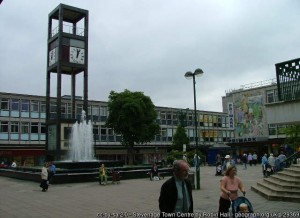
Stevenage’s Town Centre Gardens might not be the oldest thing in town, but they are a favoured attraction. It was here that the Queen first strolled, back in 59′ when the refurbished town centre was finally finished, and she came to open it. The town centre gardens are small but delightful, and it’s a nice way to give people working in town somewhere to go on their lunch breaks.
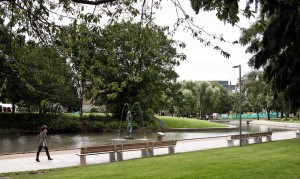
BWCSEB1989, CC BY-SA 4.0 , via Wikimedia Commons
Galleries and Museums
Stevenage Museum is the most influential museum in town. It records the history of the area back to Neolithic times. You might even find some of the Roman artefacts that they dug up in the 60s and 70s if you visit. They do have some art collections and you can hire an event space here. It’s all quite multi-functional in order to support the New Town.
For galleries, there is a choice between Annaka Fine Arts, Walkern Gallery, or G Bjelic-Rados for artist-specific works.
Although not a traditional museum, there is a working mill in nearby Cromer, which can show you how the industrial revolution was powered. It has guided tours, can talk you through the history behind the mechanics, and occasionally hosts speakers or events. It’s a nice historical tour of a town which supposedly has no history.
The Gordon Craig Theatre is part of the Stevenage arts and leisure centre. Although in a dip at the moment, you can do a number of things here. They have amateur drama courses, for example, that can teach kids how to act, dance, or sing. They show professional plays, host events, and can even spark your creative side by getting involved.
Outdoor Attractions
Fairlands Valley Park is the absolute best thing to do in Stevenage with kids – maybe even in all of Hertfordshire. They have loads of walks and forests, a deer park, 48 hectares of gorgeous meadows and woodlands. They have nature, wildlife, a few waterways… When wandering here it is easy to see why the Romans built villas in the area.
Next to this, we have the Church Farm Ardeley as a wonderful place to go and see some animals. More petting zoo than working farm, this place allows city kids to really get back to nature. They are a non-profit farm, dedicated to preserving the history of the area. You can camp or glamp here and they do memberships, should you fancy one.
Lastly in the outdoor attractions area, we have the Benington Lordship Gardens. These impressive gardens are beautifully kept, all year round. No matter whether you go in Winter or in Summer, there will be a stunning array of plants that will capture your imagination. They are particularly renowned for the Benington Lordship snowdrop display in February/early spring.
Sports and Recreation
No town guide (well one of ours anyway) would be complete without briefly mentioning the local sporting teams and in this case, it’s Stevenage FC (formally Stevenage Borough). They are one of football’s many fairytales being pretty well established in the Football League despite only being formed in 1976! They only really began their journey in the 1980-81 season but soon climbed the ranks and in 2009-10 they were promoted to the league as Conference Champions.
They have played as high as League One (tier 3) and have even been in the playoffs for a place in the Championship. At the time of writing (2020-21) they are in League Two but for those who follow [proper football you will know the standard there is pretty good at times.
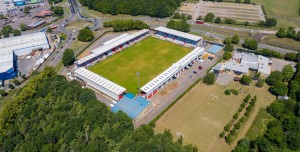
Image: Duncan Cuthbertson/Shutterstock.com
They play at the Lamex Stadium, which has a capacity of 7,800 so as long as it’s not a Cup game or a local derby you should be able to pay at the gate if you fancy taking in a game. Want to know a bit more about the team? Then check out our Stevenage FC Team Page.
Golf Anyone
As well as having its own football team, Stevenage is prime golfing territory. With so much open space around it, the town has Knebworth Golf Club at nearby Knebworth estate, The Stevenage Golf Club, and the Stevenage golf and conference centre for you to choose from. Even in your leisure time, there are venues for hire in Stevenage.
Shopping and Retail
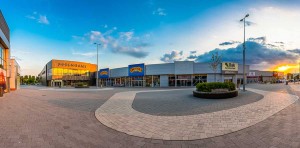
Image: Pajor Pawel/Shutterstock.com
The Westgate Shopping Centre doesn’t look new, but it does have everything you need for shopping and retail. If you can’t find it there, then head to Stevenage Indoor Market, which have everything the first place doesn’t. The Roaring Meg retail park on the outskirts of town is also worth a visit.
Other Notable Attractions
That’s just about it for things to do in Stevenage and the surrounding countryside. That being said, we have a limited space for attractions, so we like to add in the things we missed going into detail for, in the section below. Here are the things the Five Minutes Spare team loved about Stevenage, but just didn’t have the space to talk about:
- Stevenage is famous for being a great place to entertain the kids. Check out Partyman World of Play if you get a chance.
- There’s a laser tag in Stevenage, also a cinema.
- Check out Air Space trampoline park.
So between those items listed above and those items listed in the Attractions in Stevenage category, you should be able to find what you are looking for… or at least something that will entertain each of your family members for a few hours so you can get some peace and quiet. Go book that holiday, you have no excuse now.
How to Get to Stevenage?
Lost along the way? Don’t panic. We have everything you need to know about Stevenage – including how to get there – right here. You can always trust Five Minutes Spare to give you bad directions and send you on your way.
By road
Stevenage is bang on the A1/M1. Head north or south until you hit it, then follow the motorway.
Via rail
Northern Railway is responsible for the Stevenage train station.
By air
Luton Airport is your nearest plane station.
Make sure you see all the best bits on your visit, with Five Minutes Spare local guides

